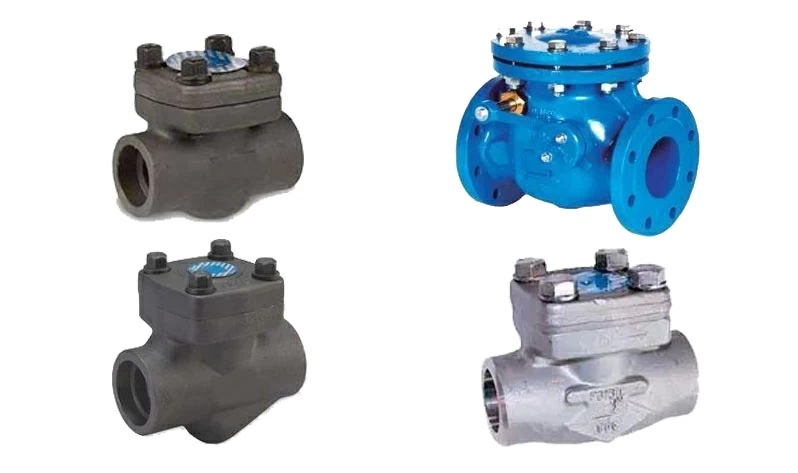Non-return valves, also known as check valves, are essential components in various industrial, commercial, and residential systems. They play a critical role in ensuring the unidirectional flow of fluids, preventing backflow, and protecting equipment from damage. Whether you’re a buyer looking for the right valve or a user seeking to understand its functionality, this guide will provide you with valuable insights.
What is a Non-Return Valve?
A non-return valve is a mechanical device designed to allow fluid (liquid or gas) to flow in one direction only. It automatically closes to prevent reverse flow, ensuring system efficiency and safety. These valves are widely used in plumbing, HVAC systems, water treatment plants, oil and gas industries, and more.
How Does a Non-Return Valve Work?
NRVs operate automatically using pressure differences. When fluid flows in the correct direction, the valve opens, allowing movement. If the flow reverses, the valve closes to prevent backflow, protecting pipelines, pumps, and other equipment from potential damage.
Types of Non-Return Valve
There are various types of non-return valves, each designed for specific applications. The choice of valve depends on factors such as flow characteristics, space constraints, and system requirements. Below are some common types and their key features:
- Swing Check Valve – Uses a hinged disc that swings open when flow moves forward and closes when flow reverses.
- Lift Check Valve – Features a piston or ball that lifts when flow is forward and drops to seal when reversed.
- Ball Check Valve – Utilizes a spherical ball to block reverse flow.
- Wafer Check Valve – A compact, lightweight design used in limited-space applications.
- Spring-Loaded Check Valve – Contains a spring mechanism that ensures quick closure to prevent reverse flow.
Key Features of Non-Return Valve
Non-return valves are essential for preventing backflow and ensuring efficient fluid control in pipelines. Their automatic operation, durable construction, and versatile designs make them suitable for a wide range of applications. Below are the key features that highlight their reliability and effectiveness.
- Automatic Operation: Non-return valves operate without manual intervention, relying on fluid pressure to open and close.
- Durability: Made from robust materials like stainless steel, brass, or PVC, they are built to withstand high pressure and corrosive environments.
- Versatility: Available in various designs, including swing check valves, lift check valves, and ball check valves, to suit different applications.
- Low Maintenance: With no complex mechanisms, these valves require minimal upkeep.
Applications of Non-Return Valve
Non-return valves are indispensable in numerous industries. Here are some common applications:
- Plumbing Systems: Prevent backflow in water supply lines.
- HVAC Systems: Ensure proper refrigerant flow in heating and cooling systems.
- Oil and Gas Industry: Safeguard pipelines and equipment from reverse flow.
- Water Treatment: Maintain the direction of water flow in filtration systems.
- Industrial Machinery: Protect pumps and compressors from damage caused by backflow.
Benefits of Using Non-Return Valve
- Prevents Backflow: Ensures fluids flow in the intended direction, reducing the risk of contamination or damage.
- Enhances System Efficiency: Minimizes pressure loss and improves overall system performance.
- Protects Equipment: Shields pumps, compressors, and other machinery from potential damage due to reverse flow.
- Cost-Effective: Reduces maintenance costs and extends the lifespan of equipment.
How to Choose the Right Non-Return Valve
Selecting the appropriate non-return valve is crucial for optimal performance. Consider the following factors:
- Material: Choose a material compatible with the fluid type (e.g., stainless steel for corrosive fluids).
- Size: Ensure the valve size matches the pipe diameter and flow rate.
- Pressure Rating: Select a valve that can handle the system’s maximum pressure.
- Type of Valve: Decide between swing, lift, or ball check valves based on your application.
- Installation Orientation: Some valves are designed for horizontal or vertical installation, so check the manufacturer’s guidelines.
Installation and Maintenance Tip
- Proper Installation: Ensure the valve is installed in the correct orientation to avoid malfunction.
- Regular Inspection: Check for wear and tear, especially in high-pressure systems.
- Cleaning: Remove debris or sediment that may hinder valve operation.
- Replacement: Replace valves that show signs of damage or failure to prevent system downtime.
FAQs About Non-Return Valve
1. What is the difference between a non-return valve and a check valve?
Non-return valves and check valves are essentially the same. Both terms refer to valves that allow fluid flow in one direction only.
2. Can non-return valves be used for gases?
Yes, non-return valves are suitable for both liquids and gases, provided they are designed for the specific application.
3. How do I know if my non-return valve is faulty?
Signs of a faulty valve include reverse flow, unusual noises, or visible damage. Regular inspection can help identify issues early.
4. Are non-return valves reusable?
Yes, most non-return valves are reusable and can be repaired or maintained as needed.
Why Invest in High-Quality Non-Return Valve?
Investing in high-quality non-return valves ensures long-term reliability, reduces downtime, and minimizes maintenance costs. Reputable brands offer valves that meet industry standards and come with warranties, providing peace of mind for buyers.
Conclusion
Non-return valves are vital components in countless systems, offering protection, efficiency, and reliability. By understanding their features, applications, and selection criteria, buyers and users can make informed decisions that enhance system performance and longevity. Whether you’re upgrading an existing system or installing a new one, choosing the right non-return valve is a step toward operational excellence.
